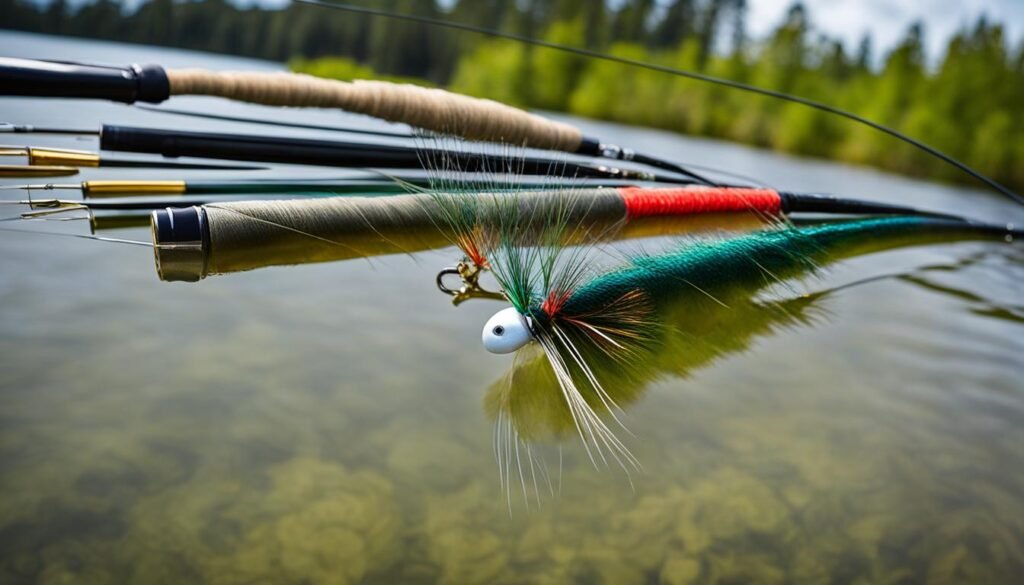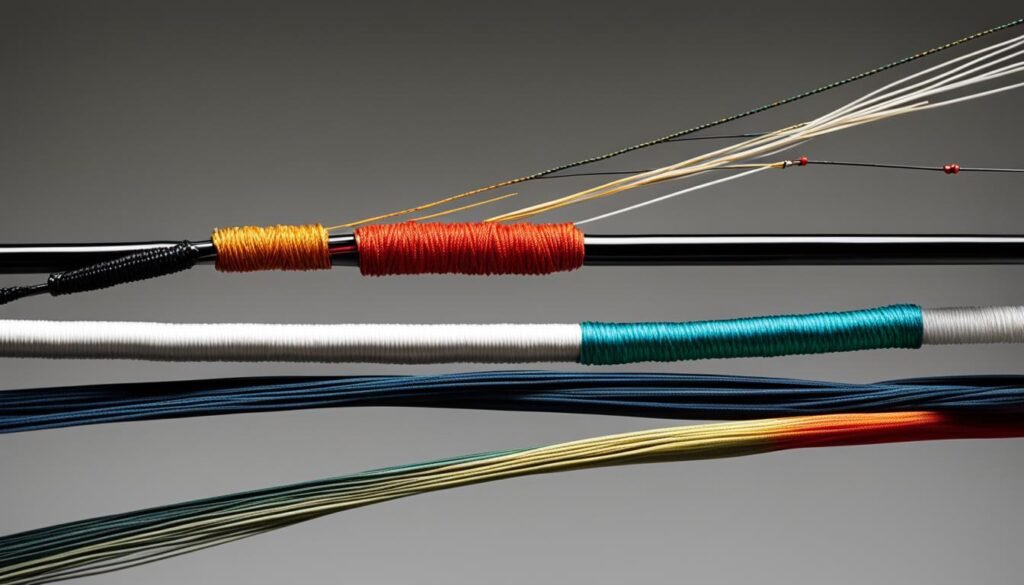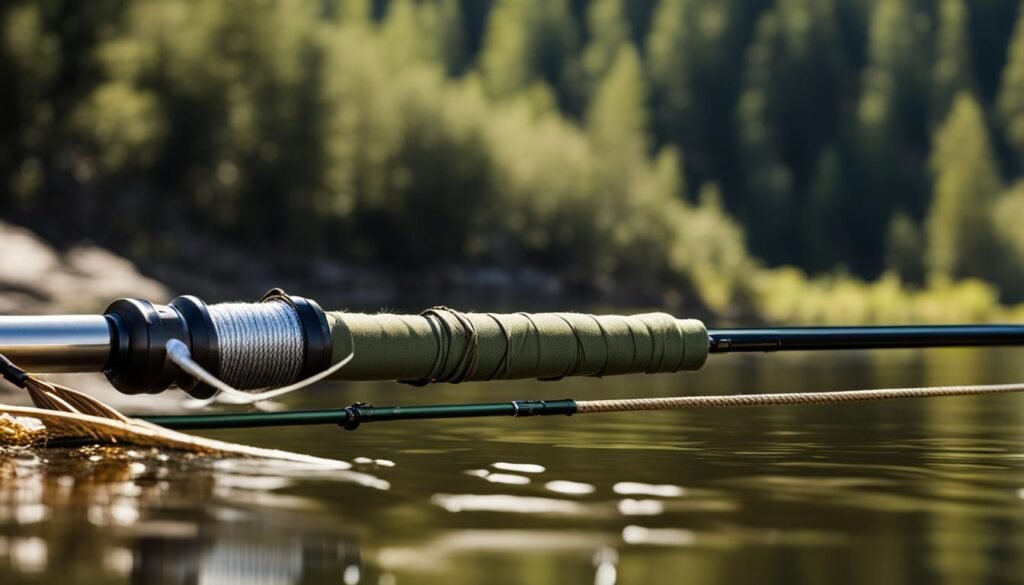When it comes to fly fishing, the right fly line weight can make all the difference. Whether you’re angling for trout in a peaceful stream or battling with powerful bass on a lake, matching your fly line weight to the fishing system is key. Join me as we explore the importance of fly line weight, how to select the right weight for different fish species, and the factors to consider when choosing fly line weight for specific fishing situations. By the end of this article, you’ll have a better understanding of the fly line weight system and be able to make informed decisions for your next fly fishing adventure.
The Importance of Fly Line Weight
When it comes to fly fishing, the weight of your fly line is of utmost importance. It plays a critical role in determining the size of the fish you can effectively target and the casting distance you can achieve. Using the wrong fly line weight can lead to poor casting performance, improper fly presentation, and decreased chances of a successful catch. Therefore, it is crucial to understand the significance of fly line weight and how it can impact your fishing experience.
Matching the appropriate fly line weight to your fly rod and reel is essential for achieving optimal performance. A well-balanced fly fishing system consists of a fly line that complements the characteristics of your rod and reel. By selecting the right fly line weight, you can ensure that the rod flexes appropriately and achieves the desired casting distance. Additionally, the proper fly line weight allows for accurate and controlled fly presentation, increasing your chances of enticing and hooking your target species.
Whether you are a beginner or an experienced angler, understanding the guide to fly line weight is essential for making informed decisions. It enables you to choose the correct fly line weight for specific fishing situations, such as targeting different fish species or adapting to varying weather conditions. By considering the importance of fly line weight and mastering its nuances, you can enhance your fly fishing skills and maximize your chances of success on the water.
To provide a comprehensive understanding of fly line weight, the following table summarizes the general guidelines for selecting the appropriate line weight based on the fish species and fishing conditions:
| Fish Species | Recommended Fly Line Weight |
|---|---|
| Small Fish (Panfish, Small Trout) | 1-3 |
| Medium Fish (Bass, Average-Sized Trout) | 4-6 |
| Large and Powerful Fish (Salmon, Steelhead) | 7 and above |
Matching Fly Line Weight to Fish Species
When it comes to fly fishing, selecting the right fly line weight is essential for success. Different fish species require different line weights to achieve optimal performance. Let’s take a closer look at the recommended fly line weights for trout, bass, and salmon fishing.
Recommended Fly Line Weights for Fish Species
| Fish Species | Recommended Fly Line Weight |
|---|---|
| Trout | 3-6 |
| Bass | 6-9 |
| Salmon | 7-10 |
Remember, these recommendations are general guidelines, and factors such as fishing conditions and personal preferences may influence your choice. It’s always a good idea to consult with experienced anglers or local fishing guides for specific recommendations based on your fishing location and target species.
Understanding Fly Line Weight and Fly Size

When it comes to fly fishing, understanding the relationship between fly line weight and fly size is crucial. The weight of your fly line should be matched with the size of the flies you plan to use, as it directly affects the presentation and effectiveness of your flies. Using the wrong fly line weight with a certain fly size can result in poor casting performance and reduced effectiveness on the water.
For smaller flies, such as those used for trout fishing, lighter fly line weights (4-6) are generally recommended. These lighter line weights allow for better control and delicate presentations, which are essential when targeting skittish trout in clear waters. On the other hand, for larger flies used for bass or pike fishing, heavier fly line weights (7 and above) provide better control, casting distance, and the ability to cast wind-resistant flies.
Fly Line Weight and Fly Size Recommendations:
| Fly Size | Recommended Fly Line Weight |
|---|---|
| Small Flies (e.g., size 18-22) | 4-6 |
| Medium Flies (e.g., size 10-16) | 4-7 |
| Large Flies (e.g., size 2-8) | 7 and above |
Fly Line Weight and Rod Flexibility
When it comes to fly fishing, the weight of your fly line can have a significant impact on the flexibility and casting performance of your fly rod. The right fly line weight can enhance the flex of your rod and improve casting distance, while the wrong weight can result in less flex and reduced casting performance. It’s important to find the right balance between fly line weight and rod flexibility to optimize your casting and fishing experience.
For those using slower action rods, a heavier fly line weight can be beneficial. The added weight helps load the rod and allows for greater casting distance. If you have a fast action rod, using a lighter fly line weight can result in faster rod recovery, providing more power and precision in your casts. Experimenting with different line weights and rods will help you find the perfect combination for your casting style and fishing preferences.
Recommended Fly Line Weights for Different Rod Actions
| Rod Action | Recommended Fly Line Weight |
|---|---|
| Slow | Heavier (7 and above) |
| Medium | Medium (4-6) |
| Fast | Lighter (1-3) |
The AFTMA System for Fly Line Weight
The AFTMA system is a standardized method used to determine the appropriate match between fly line weight and fly rod. It is based on the first 9 meters (30 feet) of the fly line and helps ensure proper balance and optimal performance. The AFTMA line weights range from 1 to 14, with lighter weights corresponding to smaller numbers and heavier weights corresponding to larger numbers.
The AFTMA system provides a consistent rating system that enables fly rod manufacturers to design rods that work best with specific line weights. By understanding the AFTMA system, anglers can choose the right fly line weight for their rod, ensuring a well-balanced set-up and efficient casting performance.
Table: AFTMA Line Weights and Corresponding Fly Line Weight Ratings
| AFTMA Line Weight | Fly Line Weight Rating |
|---|---|
| 1 | Ultra-Light |
| 2 | Light |
| 3 | Medium-Light |
| 4 | Medium |
| 5 | Medium-Heavy |
| 6 | Heavy |
| 7 | Extra-Heavy |
| 8 | X-Heavy |
| 9 | XX-Heavy |
| 10 | XXX-Heavy |
| 11 | XXXX-Heavy |
| 12 | XXXXX-Heavy |
| 13 | XXXXXX-Heavy |
| 14 | XXXXXXX-Heavy |
Understanding the AFTMA system is essential in selecting the right fly line weight for your rod. It allows you to choose a line that matches the specifications of your rod, ensuring optimal performance and casting accuracy. By following the AFTMA line weight ratings, you can easily identify the appropriate fly line weight for your fishing needs.
It’s important to note that the AFTMA system is a guideline and may vary slightly between different fly line manufacturers. It’s always a good idea to consult the manufacturer’s specifications or seek advice from experienced anglers to ensure you select the most suitable fly line weight for your fishing style and target species.
Fly Line Construction and Head Length

When it comes to fly line, understanding its construction and head length is essential for optimizing your fishing experience. The construction of a fly line can greatly affect its performance, and the length of the head can impact casting and control. Let’s take a closer look at these important factors.
Fly Line Construction
Fly lines are typically constructed using various materials, such as PVC, polyester, or a combination of both. The construction determines the line’s durability, flexibility, and overall handling. Different manufacturers may have their unique construction methods and materials, resulting in differences in performance.
Additionally, fly lines can have different tapers, which refers to the way the line’s diameter changes from one end to the other. The most common taper is the weight forward (WF) taper, where the front section of the line is thicker than the rest. This taper allows for easier casting and better control.
Fly Line Head Length
The head length of a fly line refers to the section of the line that is thicker and carries most of the weight during casting. In the past, weight forward lines typically had a head length around 9 meters (30 feet) to match the AFTMA line rating. However, modern fly lines now come with varying head lengths, ranging from 9 to 19.5 meters (30 to 64 feet).
It’s important to consider the head length of your fly line as it can impact your casting performance. Having too much of the head outside the rod tip during casting may affect the rod’s performance and your ability to control the line. Finding the right balance between head length and weight is crucial for achieving optimal casting distance and accuracy.
| Advantages of Longer Head Length | Advantages of shorter Head Length |
|---|---|
|
|
Keep in mind that the specific head length suitable for you will depend on your fishing style, casting technique, and the fishing conditions you encounter. Experimenting with different head lengths can help you find the ideal balance that suits your needs.
Fly Line Weight and Casting Distance

When it comes to fly fishing, the weight of your fly line can have a significant impact on your casting distance. Choosing the right fly line weight is crucial for achieving the desired casting range and accuracy. A heavier fly line can help load the rod, allowing you to cast longer distances. On the other hand, a lighter fly line may result in shorter casts but greater accuracy. Finding the perfect balance between distance and accuracy depends on your fishing conditions and personal preference.
For those looking to cast long distances, using a heavier fly line is recommended. A fly line weight of 6 or higher provides the necessary weight to load the rod efficiently and achieve greater casting distances. This is especially beneficial when fishing in larger bodies of water or when targeting species that require long casts, such as saltwater fish or large lake trout.
On the other hand, if accuracy is your primary goal, a lighter fly line weight may be more suitable. A fly line weight of 4 or 5 allows for better control and finesse, enabling you to present your fly precisely where you want it. This is particularly important when fishing in smaller streams or when making delicate presentations to wary fish.
Fly Line Weight and Casting Distance
| Fly Line Weight | Casting Distance | Accuracy |
|---|---|---|
| 4-5 | Short to medium | High |
| 6-7 | Medium to long | Moderate |
| 8+ | Long | Low |
Selecting Fly Line Weight for Specific Situations
When it comes to selecting the right fly line weight, it’s important to consider the specific fishing situations you’ll encounter. Different scenarios may call for different fly line weights to ensure optimal performance and success. Here are some guidelines to help you choose the right fly line weight for specific situations:
Fly Line Weight for Saltwater Fishing
In saltwater fishing, heavier fly line weights are often preferred due to the larger and more powerful fish species found in these environments. A fly line weight of 7 and above is recommended to handle the challenging conditions and the strong fighting capabilities of saltwater fish. Whether you’re chasing bonefish, tarpon, or redfish, a heavier fly line weight will provide the necessary power and control to handle these exciting saltwater species.
Fly Line Weight for Windy Conditions
When fishing in windy conditions, it’s important to choose a fly line weight that can cut through the wind and maintain accuracy and control. A heavier fly line weight, such as a 6 or 7, can help you combat the wind resistance and make accurate casts even in challenging gusts. The added weight of the fly line will help you punch through the wind and maintain line control, increasing your chances of a successful presentation.
Fly Line Weight for Delicate Presentations
For situations that require delicate presentations, such as fishing in small streams or targeting spooky fish, lighter fly line weights are recommended. A fly line weight of 4 to 6 will provide the finesse and control needed to make subtle, precise casts. These lighter line weights allow for a gentle presentation, reducing the likelihood of spooking fish and increasing your chances of a successful hookup.
| Situation | Fly Line Weight Recommendation |
|---|---|
| Saltwater Fishing | 7 and above |
| Windy Conditions | 6 or 7 |
| Delicate Presentations | 4 to 6 |
Remember, these are general recommendations, and personal preferences may vary. It’s always a good idea to consider the specific fishing conditions, target species, and your own casting style when selecting the right fly line weight. Experimenting with different line weights and seeking advice from experienced anglers can help you find the perfect match for your needs. So get out there, explore different situations, and discover the fly line weight that works best for you!
Finding Your Preferred Fly Line Weight
When it comes to selecting the perfect fly line weight, personal preference and intuition play a significant role. Finding a fly line weight that feels right for you can greatly enhance your fly fishing experience. As an angler, I understand the importance of finding the optimal balance between rod performance, casting ability, and overall feel.
Seeking advice from experienced anglers can also provide valuable insights and recommendations. Their expertise and knowledge can guide you in selecting the fly line weight that suits your fishing needs and preferences. Remember, everyone has their own personal fly line preference, so don’t be afraid to try different weights and see what works best for you.
The Importance of Finding the Right Fly Line Weight
Choosing the right fly line weight is crucial for achieving optimal performance in your fly fishing endeavors. A well-balanced fly line weight ensures efficient casting, accurate fly presentation, and improved chances of a successful catch. It is essential to match the fly line weight to your rod and fishing conditions for the best results.
Experimentation and Guidance for Fly Line Weight Selection
Finding your preferred fly line weight requires a combination of experimentation and seeking advice from experienced anglers. By trying out different weights and taking into consideration the recommendations of seasoned fishermen, you can discover the fly line weight that suits your casting style and fishing preferences.
Fly Line Weight by Feel
Choosing the right fly line weight is not just about numbers; it is also about how it feels when you cast and fish. Fly line weight by feel involves understanding the flex profile of your rod and identifying the weight that allows for optimal performance and control. Trusting your instincts and listening to your rod can lead you to the fly line weight that feels perfect for you.
| Benefits of Finding Your Preferred Fly Line Weight | Considerations for Fly Line Weight Selection |
|---|---|
|
|
Tips for Choosing the Right Fly Line Weight
Choosing the right fly line weight is a key decision for any angler. To help you make an informed choice, here are some valuable tips and recommendations:
1. Match the line weight to the fish species: Consider the size and strength of the fish you plan to target. Lighter line weights (1-3) are suitable for small fish like panfish and small trout, while heavier line weights (7 and above) are better for larger and more powerful species like bass, salmon, and steelhead.
2. Consider fishing conditions and casting distance: Think about the fishing environment and the distance you need to cast. Heavier line weights can help achieve longer casting distances, while lighter line weights offer greater accuracy. Choose a line weight that suits your specific fishing needs.
3. Understand rod flexibility and line weight interaction: Different fly rods have varying levels of flexibility. Heavier line weights can enhance the flex of a rod, making it ideal for slower action rods. On the other hand, lighter line weights provide quicker rod recovery, which is beneficial for fast action rods. Consider your rod’s flex profile and how it interacts with different line weights.
4. Seek advice from experienced anglers: If you’re unsure about which line weight to choose, don’t hesitate to ask for advice from seasoned anglers or fishing guides. Their expertise and experience can provide valuable insights and help you make an informed decision.

